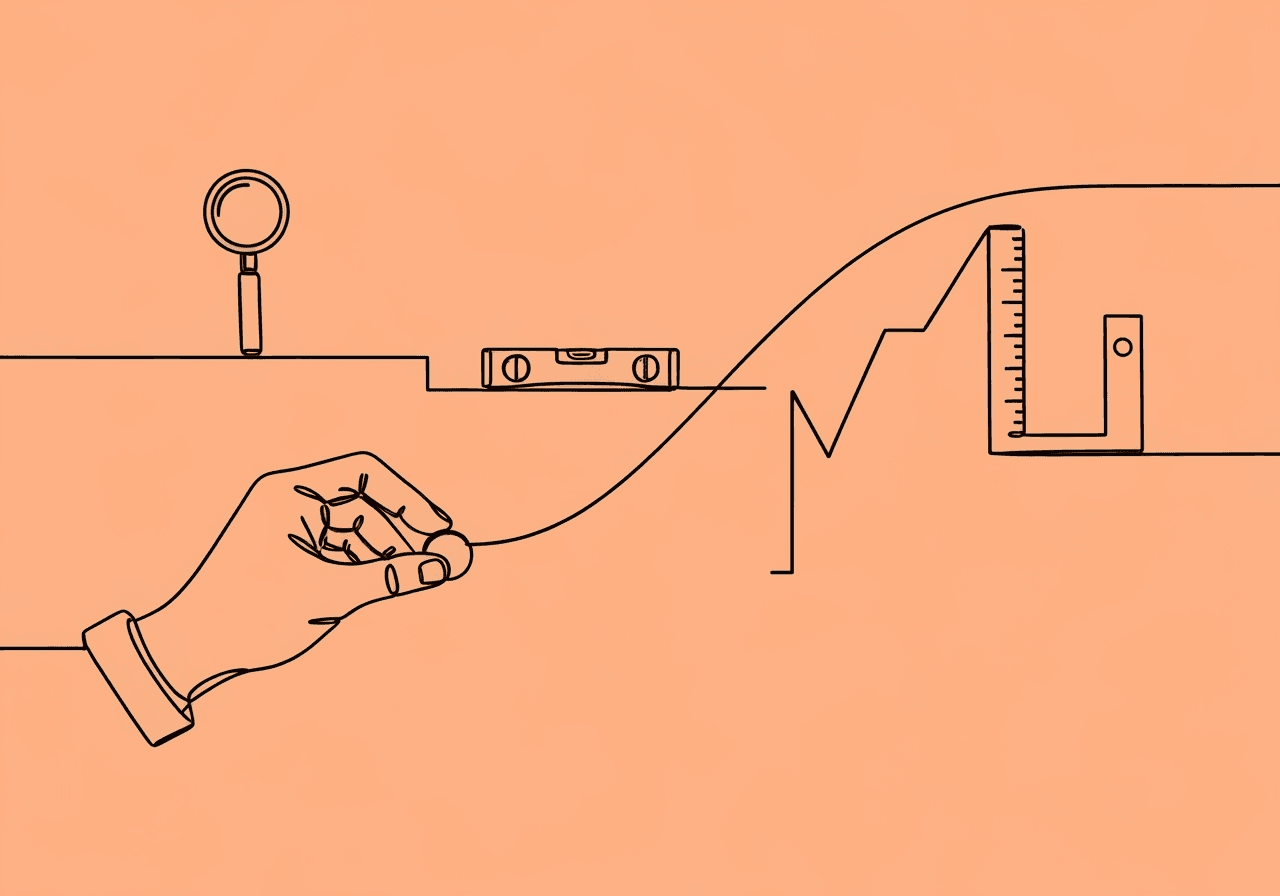Documenting Skill vs Behavior Data: ABA Guide for Beginners

Documenting Skill vs Behavior Data: ABA Guide for Beginners
Imagine starting a therapy session with excitement, only to realize your notes from last week don't clearly show if the child's new greeting skill is improving—or if a target behavior like hand-flapping is decreasing. This confusion can stall progress and frustrate everyone involved. For RBTs and early-career BCBAs, documenting skill vs behavior data is a key part of successful ABA therapy. It ensures interventions stay evidence-based and tailored to each learner's needs.
In this beginner's guide, you'll learn the distinct approaches to tracking skill building and behavior decreases. You'll draw from BACB guidelines and proven practices. We'll cover what each type of documentation entails, practical logging tips, common pitfalls, and ethical insights for supervisors. By the end, you'll have actionable steps to boost accuracy and compliance, leading to better outcomes for your clients.
Here are 3-5 key takeaways from this post to help you get started:
- Skill acquisition data tracks new abilities with methods like trial-by-trial recording to measure growth toward independence.
- Behavior reduction data focuses on decreases in problematic actions using tools like ABC recording to identify patterns and triggers.
- Always use operational definitions and interobserver checks to ensure reliable, ethical documentation.
- Integrating both types provides a full picture of client progress, supporting BACB-compliant adjustments.
- Common pitfalls, like inconsistent logging, can be avoided with real-time entries and team reviews.
Understanding Skill Acquisition Documentation
Skill acquisition focuses on teaching new behaviors, like tying shoes or making eye contact, to build independence. According to the BACB's RBT Task List (2nd ed., 2022), this involves measuring how learners perform these skills over time to track mastery. RBTs play a key role here. They collect data during every teaching opportunity to show positive progress objectively.
Appropriate measurement types include trial-by-trial recording for discrete trials. Here, you note correct responses, prompts used, and errors per session. Say, for instance, during a session on greetings, you might record if the learner responds correctly without help in 7 out of 10 trials. This helps spot trends, like steady improvement from one week to the next.
Frequency counts work well for skills like requesting help. You tally how many times the learner initiates independently. For chained skills, such as dressing, use task analysis to break it down. Log progress on each step, often with prompt levels fading from full guidance to none. This step-by-step approach lets you see exactly where support is still needed, adjusting teaching as the learner gains confidence.
RBTs log positive progress by entering data right after trials. Use simple tools like data sheets or apps to capture specifics: date, time, skill targeted, and percentage of independent responses. If a learner completes 80% of trials without prompts today versus 50% last week, this signals growth. Always define the skill operationally upfront, like "learner says 'hello' within 3 seconds of entering the room." This keeps records consistent and easy for the team to review.
Common pitfalls include inconsistent definitions, leading to mismatched data across team members. Or, skipping trials during busy sessions, which skews results. To avoid this, train on interobserver agreement—where two people collect data simultaneously and compare for 80% or higher match, as per standard ABA practice (Interval-by-Interval IOA in ABA). This ensures reliability. It also helps BCBAs adjust programs effectively, keeping everyone on the same page.
I've seen how these checks make a real difference in team sessions—suddenly, everyone's data aligns, and progress feels more real. Integrating tools like customizable templates can streamline this. For more on setting measurable goals, check our guide on SMART goal writing.
Mastering Behavior Reduction Documentation
Behavior reduction targets decreasing problematic actions, such as aggression or elopement, to create safer environments. Unlike skill building, the focus here is on patterns and triggers, per BACB guidelines. This informs intervention plans that replace the behavior with functional alternatives. RBTs document decreases by highlighting reductions in occurrence, intensity, or duration. They always tie back to the behavior intervention plan, ensuring measuring behavior reduction stays precise and useful.
Key measurement types emphasize continuous or interval methods. Frequency recording counts incidents per session, like noting three tantrums today versus five last week. This simple count shows if interventions are working over time. Duration tracks how long behaviors last, useful for self-injurious actions. It reveals if episodes are shortening, say from 5 minutes to just 2.
Latency measures time from trigger to onset, such as seconds before a child complies after a demand. ABC data—antecedents (what happened before), behavior (what occurred), and consequences (what followed)—is essential. It captures context like "demand presented → screaming → escape granted." This reveals functions like attention-seeking, guiding better supports.
RBTs log decreases by recording data in real-time or immediately after. Use structured sheets to detail each episode without judgment. For instance, if a plan uses differential reinforcement, note the behavior's absence during opportunities. You might write, "No elopement during 10-min transitions; praised compliance." This shows progress quantitatively, such as a 50% drop in incidents over two weeks.
Ethical logging avoids vague terms like "bad day" and sticks to observables. It supports the BACB's call for objective records in section 1.01 of the Ethics Code (2022) (Ethics Code for Behavior Analysts). A frequent mistake is overlooking context, leading to incomplete ABC entries that miss environmental factors. Combat this by reviewing data weekly with your BCBA. Use prompts for thoroughness to catch details you might otherwise skip.
In my experience as an RBT, thorough ABC logging turned a client's frequent outbursts into predictable patterns we could address. For deeper dives into timing-based measures like measuring behavior reduction, explore our latency guide.
Key Differences Between Skill and Behavior Data
Distinguishing documenting skill vs behavior data prevents mixed-up records that could mislead treatment. Skill acquisition data prioritizes growth in new abilities. It uses high-density methods like trial-by-trial (every opportunity measured) to celebrate independence, as outlined in BACB's skill acquisition protocols. These methods build a clear picture of mastery, step by step.
Behavior reduction data, conversely, scans for declines in issues. It employs ABC or interval recording to uncover functions and ensure safety. Measuring behavior reduction here means focusing on decreases, not just counts, to support safer sessions. This contrast helps teams choose the right tools for each goal.
Ethically, RBTs must document both accurately to comply with BACB standards. They avoid fabrication or omission—per Ethics Code 1.01 (2022), which mandates truthful reporting (Ethics Code for Behavior Analysts). For non-progress in skills, log it factually without bias. Our non-progress guide offers tips on this. Supervisors, like early-career BCBAs, review these for trends. They graph data to decide on plan tweaks, such as intensifying prompts for stagnant skills or analyzing ABC for rising behaviors.
A practical difference: Skill data often shows upward trends toward 80-90% mastery criteria. Behavior data aims for zero or near-zero occurrences post-intervention. Integrating both in session notes ensures holistic views. Use our session note checklist for BACB-aligned templates.
Research in the Journal of Applied Behavior Analysis highlights a persisting curious double standard in behavior analysis: Frequent reporting of interobserver agreement but infrequent reporting of procedural fidelity, around 24-25% in studies (On a persisting curious double standard). This underscores the need for consistent documentation across skill and behavior types to support intervention fidelity and client gains.
For BCBAs, ethical oversight means training RBTs on these distinctions as part of regular supervision. It also includes auditing records for accuracy, fostering team-wide integrity per BACB guidelines.
Frequently Asked Questions
What are the most effective data collection methods for skill acquisition?
Effective methods for skill acquisition include trial-by-trial data for discrete teaching and frequency recording for independent performance, as per BACB guidelines (2022). These allow RBTs to track prompts and correct responses precisely, ensuring progress toward mastery. Prompt-level data in task analyses helps fade support systematically. For best results, collect during every opportunity to build reliable baselines, per ABA data methods.
How do you choose the right data collection method for behavior reduction?
Select based on the behavior's nature: Use ABC data for functional analysis and frequency or duration for quantifiable incidents, recommended by the BACB RBT Task List (2022). Interval recording suits high-rate behaviors when full observation is tough. Tailor to the plan's goals, like reducing intensity, and train for consistency to maintain integrity, as detailed in Raven Health's guide.
What role does data play in ABA therapy outcomes?
Data drives personalized adjustments, with accurate collection linked to better progress tracking. It supports 58% of children achieving meaningful changes after consistent ABA, per a PMC study (2021) (Applied Behavior Analysis in Children and Youth with Autism Spectrum Disorders). It ensures evidence-based decisions, reduces variability, and builds family trust through transparent reports.
How can RBTs ensure ethical documentation in skill vs behavior data?
Follow BACB Ethics Code 1.01 (2022) by using objective, operational definitions and timely, accurate entries without alteration (Ethics Code for Behavior Analysts). Review with supervisors regularly, and document non-progress honestly to support client-centered care, avoiding assumptions that could harm interventions.
What are common pitfalls in ABA data collection for beginners?
Beginners often face inconsistent definitions or skipped entries due to session demands, leading to unreliable data. To counter, use standardized tools and interobserver checks for 80% or higher agreement, as advised by ABA data pitfalls.
How does ABC data specifically aid behavior reduction?
ABC data identifies triggers and functions, like escape-maintained behaviors, guiding targeted interventions. RBTs log it per episode to show decreases, such as fewer incidents post-reinforcement changes, enhancing plan efficacy per ExpiWell's strategies.
Accurate documentation of skill acquisition and measuring behavior reduction isn't just a task—it's what turns ABA into transformative therapy. By distinguishing documenting skill vs behavior data, RBTs and BCBAs create clearer paths to client success, aligning with BACB ethics for accountable practice. Clinics with precise data see faster documentation and reduced errors, improving satisfaction for all.
To apply this, start by auditing one session's notes against BACB criteria today. Next, collaborate with your team on a shared ABC template for behavior targets. Finally, explore AI tools for streamlined logging to focus more on teaching. With these habits, you'll enhance compliance and outcomes, empowering learners every step of the way.
Popular in ABA Session Notes & Tools
- 1
RBT Supervision Documentation: 2025 BACB Guide & Templates
8449 min read - 2
Master ABA Medical Necessity Documentation: Avoid Denials
3859 min read - 3
Master ABA SOAP Notes: Guide for RBTs & BCBAs
3729 min read - 4
Guide to ABA Progress Reports for Insurance Reauthorization
3318 min read - 5
ABA Session Notes for Beginners: Essential Guide
3297 min read
Popular in ABA Session Notes & Tools
- 1
RBT Supervision Documentation: 2025 BACB Guide & Templates
8449 min read - 2
Master ABA Medical Necessity Documentation: Avoid Denials
3859 min read - 3
Master ABA SOAP Notes: Guide for RBTs & BCBAs
3729 min read - 4
Guide to ABA Progress Reports for Insurance Reauthorization
3318 min read - 5
ABA Session Notes for Beginners: Essential Guide
3297 min read
Related Resources
Explore more helpful content on similar topics

Documenting Skill Generalization in ABA: RBT Guide
Learn how to document skill generalization in ABA effectively as an RBT. This guide details key components, step-by-step session notes, and compliance tips to ensure funding success and avoid common pitfalls.

RBT Elopement Documentation: ABC Data Guide
Master RBT elopement documentation with this essential ABC data guide for ABA therapists. Learn operational definitions, measurement techniques, and how to avoid common mistakes in high-risk behavior tracking.

RBT Visual Analysis Documentation: Step-by-Step Guide
Master RBT visual analysis documentation in this comprehensive step-by-step guide. Discover how to set up ABA graphs, analyze trends and variability, and write compliant session notes for effective progress tracking.